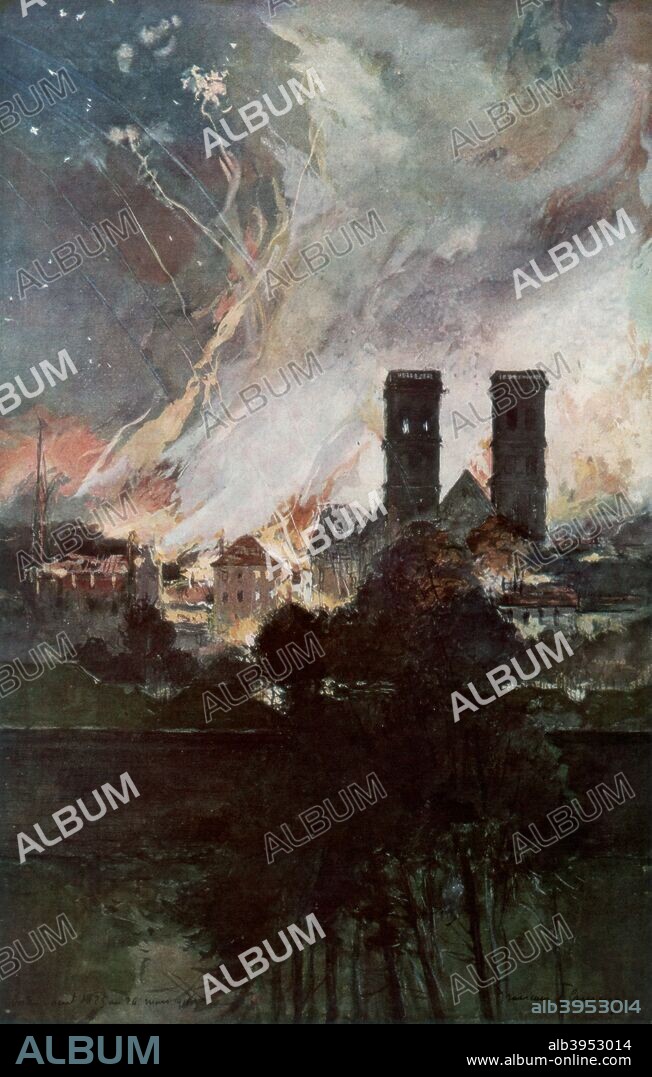alb3953014
'Bombardment of Verdun with Incendiary Shells', France, 25-26 March 1916, (1926). Artist: Francois Flameng

|
Add to another lightbox |
|
Add to another lightbox |



Buy this image.
Select the use:

Title:
'Bombardment of Verdun with Incendiary Shells', France, 25-26 March 1916, (1926). Artist: Francois Flameng
Caption:
'Bombardment of Verdun with Incendiary Shells', France, 25-26 March 1916, (1926). The Battle of Verdun was the longest and one of the bloodiest of the First World War. The Germans began their offensive on 21 February 1916. The strategic objective of their commander, Erich von Falkenhayn was to ''bleed the French Army white by committing them to a battle of attrition in a sector of the front they would be compelled to defend at all costs. Falkenhayn's grim logic was that with a population twice that of France, Germany could afford to lose two men to every one Frenchman, thus forcing them out of the war. After early successes with the French caught by surprise and with inadequate numbers of troops and artillery, the German advance was gradually halted by desperate counter-attacks. By 11 December the Germans had retreated to their original positions. Casualties were appalling; 434,000 Germans and 550,000 on the French side.
Credit:
Album / The Print Collector / Heritage Images
Releases:
Model: No - Property: No
Rights questions?
Rights questions?
Image size:
3339 x 5241 px | 50.1 MB
Print size:
28.3 x 44.4 cm | 11.1 x 17.5 in (300 dpi)
Keywords:
1910S • 1ST WORLD WAR • 20TH CENTURY • ABLAZE • ART • ARTS • BATTLE OF VERDUN • BATTLE • BURNING • CATHEDRAL • CATHEDRALS • CENTURY • CHRISTIANISM • CHRISTIANITY • CONCEPT • COUNTRY • CRISTIANDAD • CRISTIANISMO • DESTRUCTION • DEVASTATION • FIRE • FIRST WORLD WAR • FLAMENG • FRANCE • FRANÇOIS FLAMENG • FRANÇOIS • FRENCH • FRONT • INCENDIARY SHELL • LOCATION • LORRAINE • LOTHRINGEN • MEUSE • MINSTER (CATHEDRAL) • NIGHT • PAINTING • RELIGION • RELIGIOUS • SHELL • TIME OF DAY • TOWER • TOWN • VERDUN • WAR • WESTERN FRONT • WORLD WAR I (1914-18) • WORLD WAR I • WORLD WAR ONE • WW1 • WWI
 Pinterest
Pinterest Twitter
Twitter Facebook
Facebook Copy link
Copy link Email
Email
